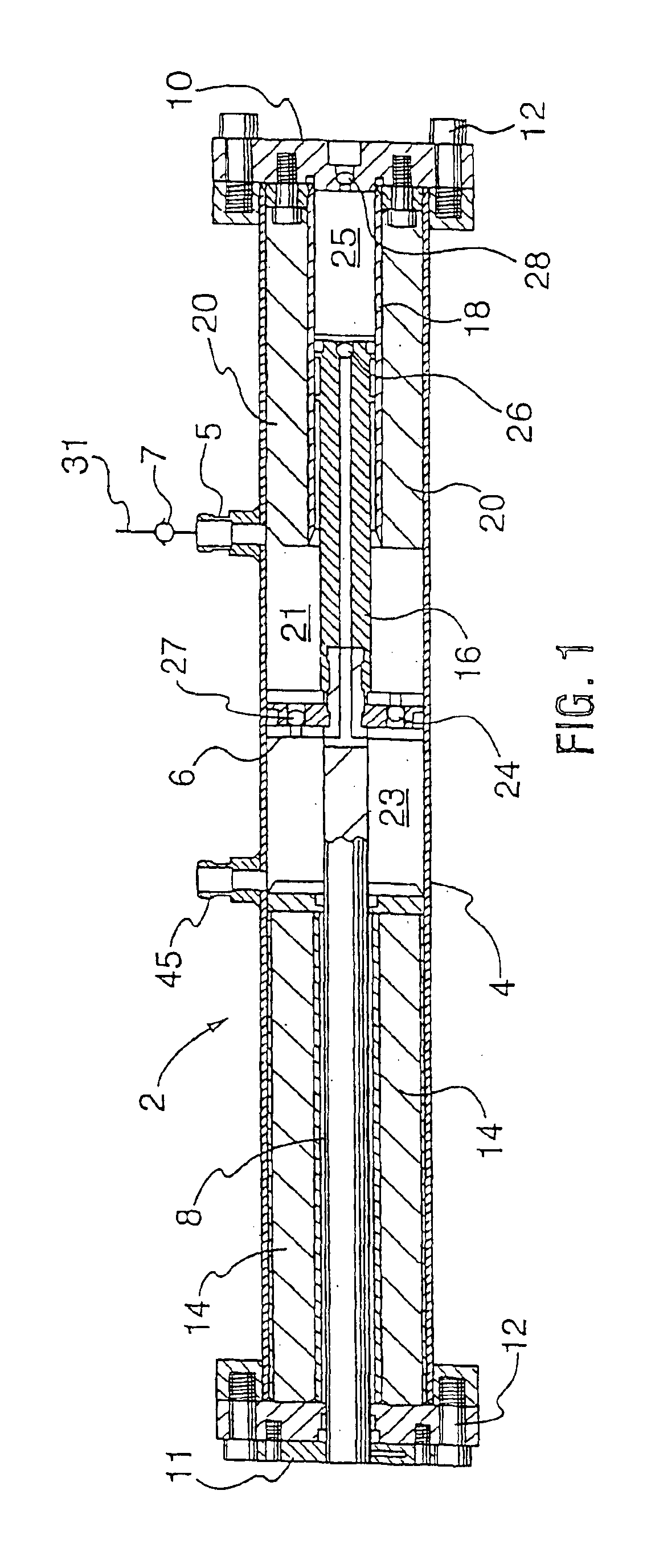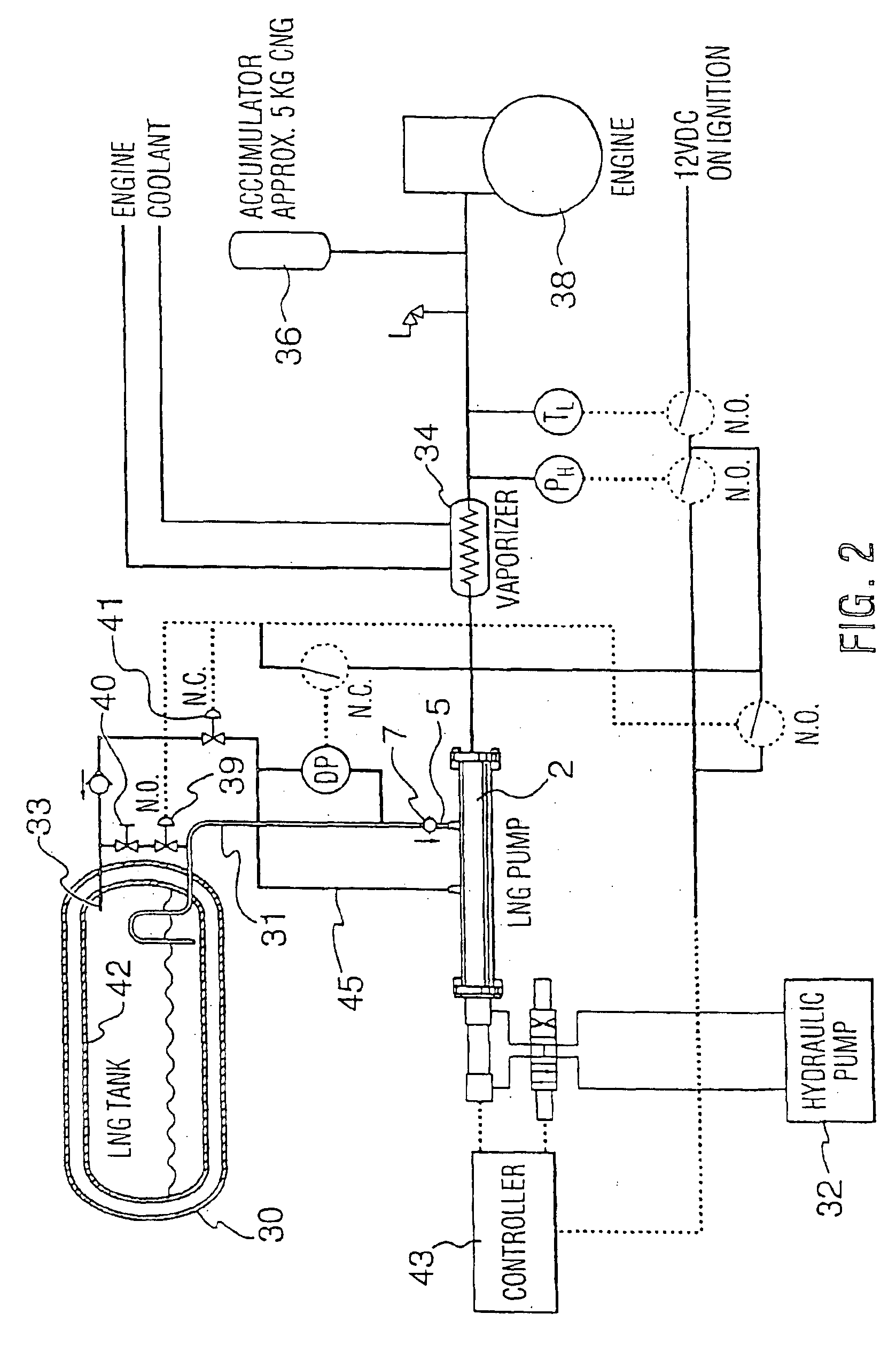High pressure pump system for supplying a cryogenic fluid from a storage tank
a cryogenic fluid and high pressure pump technology, which is applied in the direction of positive displacement liquid engines, machines/engines, containers, etc., can solve the problems of unsuitable trucks and buses, uneconomical and unpractical to build an lng tank with such a high operating pressure, and achieve a wide range of selectable flow rates
- Summary
- Abstract
- Description
- Claims
- Application Information
AI Technical Summary
Benefits of technology
Problems solved by technology
Method used
Image
Examples
second embodiment
[0090]FIG. 4 illustrates a detailed enlarged section view of the present system, in which LNG pump 48 is built into LNG tank assembly 30. FIG. 4 illustrates suction line 31 in looped configuration to thereby provide a gas trap, as is common in the cryogenic and LNG art. Pump 48 is held in place against seal 47 formed in the end of sump 46 by bolts or some similar holding mechanism. Pump 48 can be separated from seal 47 and withdrawn by removing the securing bolts. The LNG from inner tank 42 (see FIG. 3) flows through suction line 31 into space 49 between sump 46 and the outer shell of pump 48. The vacuum within sump space 44 (see FIG. 3) is maintained by sump space 44 being sealed by the exterior of sump 46 and sleeve 50. Pump 48 can be withdrawn from the interior of sleeve 50 without disturbing the vacuum in space 44 (see FIG. 6). Sump 46 is sealed to sleeve 50 at junction 52.
[0091]Built-in pump 48 operates in the following manner. When piston 54 retracts to the left, LNG is drawn ...
third embodiment
[0093]The pump shown in FIG. 4 will pump LNG to high pressure without inducing heat into storage tank assembly 30, but if operating conditions are such that a longer holding time is demanded, an inducer feature similar to that shown in FIGS. 1 and 2 can be added. FIG. 5 illustrates a detailed enlarged section view of the present system, which features an LNG pump built into the LNG tank in association with an inducer. It will be understood that FIG. 5 is illustrative only and would not be built precisely as shown. The narrow left end of sump 46 would have to be layered in order to enable the inducer of pump 148 to be withdrawn.
[0094]In the embodiment illustrated in FIG. 5, induction chamber 68 is attached to the inlet end of pump 148 thereby combining some of the novel features of pump 2 and pump 48. The volume of induction chamber 68 is on the order of four times larger than chamber 51, that is, the diameter of chamber 68 is twice that of chamber 51. A smaller piston rod 59 is exte...
PUM
 Login to View More
Login to View More Abstract
Description
Claims
Application Information
 Login to View More
Login to View More - R&D
- Intellectual Property
- Life Sciences
- Materials
- Tech Scout
- Unparalleled Data Quality
- Higher Quality Content
- 60% Fewer Hallucinations
Browse by: Latest US Patents, China's latest patents, Technical Efficacy Thesaurus, Application Domain, Technology Topic, Popular Technical Reports.
© 2025 PatSnap. All rights reserved.Legal|Privacy policy|Modern Slavery Act Transparency Statement|Sitemap|About US| Contact US: help@patsnap.com



